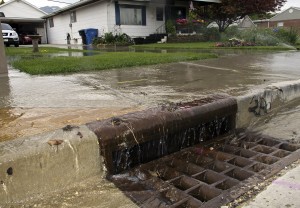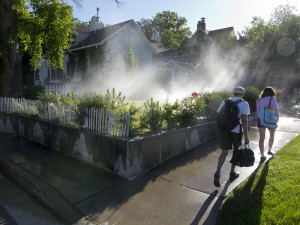 WATERLOGGED
WATERLOGGED
The states of Nevada and Utah are leading the nation in two undesirable categories, sprawl and water usage. In Utah’s case, population growth is the primary culprit. More people and more houses use more of everything, including water. Lots of water.
As the second driest state, Utah is the second largest consumer of water per person in the nation (295 gallons per person per day), with about two-thirds of water in private homes being used on lawns and landscapes. Forty percent of that water is wasted, according to Utah State University. Leaks and over watering account for most of the waste.
Water overuse can be traced directly to Utah’s property tax system.
According to the Utah Rivers Council: “Utah is unique in collecting property taxes from homeowners to lower the price of water by all of its water suppliers. These taxes are the reason Utah has America’s cheapest water rates and is the country’s most wasteful water user. Utah is not just America’s highest water user; its conservation deadlines are 30 years behind most other cities, demonstrating the State’s apathy to reducing water waste. Utah’s goal is to reduce water waste by 0.5% per year. This is ridiculous compared to what other states are achieving. How can water officials claim we are running out of water and not discourage water waste? There are simple measures that the State of Utah could take to adopt more conservative water use practices.”
“One third to half of water bills are paid by property taxes,” says Zach Frankel, executive director of the Utah Rivers Council, citing a study from the University of Utah. “In this fiscally conservative society, no other utility gets its heavy users subsidized by light users. We could reduce our urban water use by 20-25 percent without removing one blade of grass. We water sidewalks driveways and gutters because we have the cheapest water in the nation.”
“The biggest question is what happens to the water from agricultural land converted to sprawl.” said Frankel
It is widely accepted that  80-85 percent of all water consumption in Utah is for agriculture. Frankel says lobbyists argue for building multi-billion dollar water projects for projected growth when the least costly, most efficient way to deal with water shortages in the future is to use the water we have now more efficiently.
80-85 percent of all water consumption in Utah is for agriculture. Frankel says lobbyists argue for building multi-billion dollar water projects for projected growth when the least costly, most efficient way to deal with water shortages in the future is to use the water we have now more efficiently.






